Showing Spotlights 81 - 88 of 627 in category All (newest first):
 Since the beginning of the COVID-19 pandemic in 2020, researchers have intensified their efforts to improve the performance of antiviral and antibacterial face masks by adding various functionalities such as metal nanoparticles and herbal extracts to inactivate pathogens, using graphene to make masks photothermal and superhydrophobic, and even using triboelectric nanogenerators to prolong mask lifetime. Based on these works, manufacturers have developed different mask styles and air filtration materials using various nanomaterials.
Since the beginning of the COVID-19 pandemic in 2020, researchers have intensified their efforts to improve the performance of antiviral and antibacterial face masks by adding various functionalities such as metal nanoparticles and herbal extracts to inactivate pathogens, using graphene to make masks photothermal and superhydrophobic, and even using triboelectric nanogenerators to prolong mask lifetime. Based on these works, manufacturers have developed different mask styles and air filtration materials using various nanomaterials.
Mar 14th, 2022
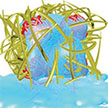 Scientists estimate that at any one instant, the Earth's atmosphere contains about 12 900 cubic kilometers of water vapor. Extracting water from the air, that is, atmospheric water harvesting(AWH), becomes a promising alternative technology to produce freshwater. Atmospheric water harvesting can be achieved through three different approaches: fog collection, dew harvesting, and sorbent-based AWH. Here is a review of the recent materials engineering-enabled water management strategies for improving AWH performance at different working conditions (i.e., saturated humidity, dew point, and unsaturated humidity).
Scientists estimate that at any one instant, the Earth's atmosphere contains about 12 900 cubic kilometers of water vapor. Extracting water from the air, that is, atmospheric water harvesting(AWH), becomes a promising alternative technology to produce freshwater. Atmospheric water harvesting can be achieved through three different approaches: fog collection, dew harvesting, and sorbent-based AWH. Here is a review of the recent materials engineering-enabled water management strategies for improving AWH performance at different working conditions (i.e., saturated humidity, dew point, and unsaturated humidity).
Feb 24th, 2022
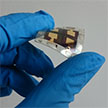 Perovskite semiconductor solar cells are a very exciting photovoltaic technology possessing similar efficiencies to silicon but cast or printed in thin films via liquid inks. Researchers have developed a new method that uses a simple sheet of paper to deposit the perovskite films that does without any expensive equipment. The trick to achieve high performance with this remarkably cheap method is to soak the paper applicator in anti-solvent which almost doubles efficiencies compared to when using it dry, reaching 11% on flexible plastic substrates.
Perovskite semiconductor solar cells are a very exciting photovoltaic technology possessing similar efficiencies to silicon but cast or printed in thin films via liquid inks. Researchers have developed a new method that uses a simple sheet of paper to deposit the perovskite films that does without any expensive equipment. The trick to achieve high performance with this remarkably cheap method is to soak the paper applicator in anti-solvent which almost doubles efficiencies compared to when using it dry, reaching 11% on flexible plastic substrates.
Feb 15th, 2022
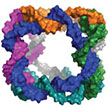 Nucleic acid nanoparticles (NANPs) have found success in a variety of biochemical applications ranging from nanoscaffolds for coordinated delivery of multiple therapeutic nucleic acids (TNAs) to potent immunoregulators and biosensors. Despite their potential, the true viability of NANPs and TNAs is limited by their relative chemical instability and sensitivity to higher temperatures. Shipping and transportation of NANPs and TNAs currently relies on a cold-chain storage. Newly developed methods could reduce the need for cold chain storage and dramatically improve vaccine shelf life.
Nucleic acid nanoparticles (NANPs) have found success in a variety of biochemical applications ranging from nanoscaffolds for coordinated delivery of multiple therapeutic nucleic acids (TNAs) to potent immunoregulators and biosensors. Despite their potential, the true viability of NANPs and TNAs is limited by their relative chemical instability and sensitivity to higher temperatures. Shipping and transportation of NANPs and TNAs currently relies on a cold-chain storage. Newly developed methods could reduce the need for cold chain storage and dramatically improve vaccine shelf life.
Feb 10th, 2022
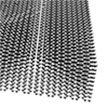 When two or more 2D materials are placed on top of each other their properties change and a material with novel hybrid properties emerges. These materials are called van der Waals heterostructures. By stacking free-standing membranes under observation in an electron microscope, researchers have demonstrated almost arbitrary 3D structures by stacking atomically thin materials, similar to a 3D printing process, where each atomic layer can be chosen from the vast library of available 2D materials.
When two or more 2D materials are placed on top of each other their properties change and a material with novel hybrid properties emerges. These materials are called van der Waals heterostructures. By stacking free-standing membranes under observation in an electron microscope, researchers have demonstrated almost arbitrary 3D structures by stacking atomically thin materials, similar to a 3D printing process, where each atomic layer can be chosen from the vast library of available 2D materials.
Feb 7th, 2022
 Conventional skin electronics are fixed designs that lack consideration for the individual characteristics of the wearer as well as the ability to actively adapt to various user specifications. In order to manage different sensor specifications and body impedances, design adjustments are inevitable during fabrication of these devices. To address this issue, researchers have developed a real-time fabrication platform that can adapt to arbitrary environments by freely drawing or erasing paths in a printed circuit.
Conventional skin electronics are fixed designs that lack consideration for the individual characteristics of the wearer as well as the ability to actively adapt to various user specifications. In order to manage different sensor specifications and body impedances, design adjustments are inevitable during fabrication of these devices. To address this issue, researchers have developed a real-time fabrication platform that can adapt to arbitrary environments by freely drawing or erasing paths in a printed circuit.
Feb 3rd, 2022
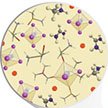 Scientists have demonstrated a technique for producing perovskite photovoltaic materials on an industrial scale, which will reduce the cost and improve the performance of mass-produced perovskite solar cells. The technique, which uses spin coating by designing a co-solvent dilution strategy, is low-cost, simple, energy-efficient, and should pave the way for creating perovskite solar cells. This work demonstrates that these existing technologies could be used to create perovskite solar cells.
Scientists have demonstrated a technique for producing perovskite photovoltaic materials on an industrial scale, which will reduce the cost and improve the performance of mass-produced perovskite solar cells. The technique, which uses spin coating by designing a co-solvent dilution strategy, is low-cost, simple, energy-efficient, and should pave the way for creating perovskite solar cells. This work demonstrates that these existing technologies could be used to create perovskite solar cells.
Jan 31st, 2022
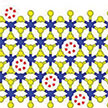 This review summarizes the current industrial graphene synthetic and analytical methods, as well as recent academic advancements in larger-scale or sustainable synthesis of graphene. Specific emphasis is placed on recent research in the use of flash Joule heating as a rapid, efficient, and scalable method to produce graphene and other 2D nanomaterials. Challenges and opportunities in the larger-scale synthesis of graphene and a perspective on the broader use of flash Joule heating for larger-scale 2D materials synthesis are discussed.
This review summarizes the current industrial graphene synthetic and analytical methods, as well as recent academic advancements in larger-scale or sustainable synthesis of graphene. Specific emphasis is placed on recent research in the use of flash Joule heating as a rapid, efficient, and scalable method to produce graphene and other 2D nanomaterials. Challenges and opportunities in the larger-scale synthesis of graphene and a perspective on the broader use of flash Joule heating for larger-scale 2D materials synthesis are discussed.
Jan 19th, 2022
 Since the beginning of the COVID-19 pandemic in 2020, researchers have intensified their efforts to improve the performance of antiviral and antibacterial face masks by adding various functionalities such as metal nanoparticles and herbal extracts to inactivate pathogens, using graphene to make masks photothermal and superhydrophobic, and even using triboelectric nanogenerators to prolong mask lifetime. Based on these works, manufacturers have developed different mask styles and air filtration materials using various nanomaterials.
Since the beginning of the COVID-19 pandemic in 2020, researchers have intensified their efforts to improve the performance of antiviral and antibacterial face masks by adding various functionalities such as metal nanoparticles and herbal extracts to inactivate pathogens, using graphene to make masks photothermal and superhydrophobic, and even using triboelectric nanogenerators to prolong mask lifetime. Based on these works, manufacturers have developed different mask styles and air filtration materials using various nanomaterials.
 Subscribe to our Nanotechnology Spotlight feed
Subscribe to our Nanotechnology Spotlight feed





